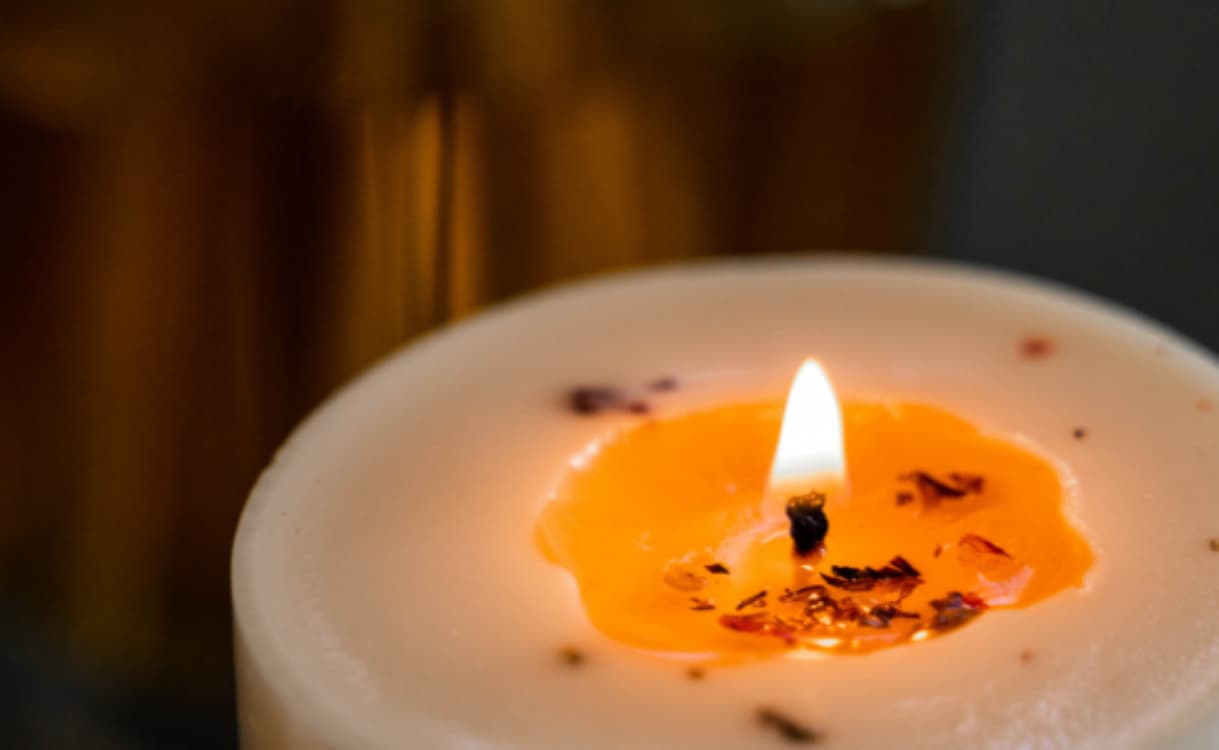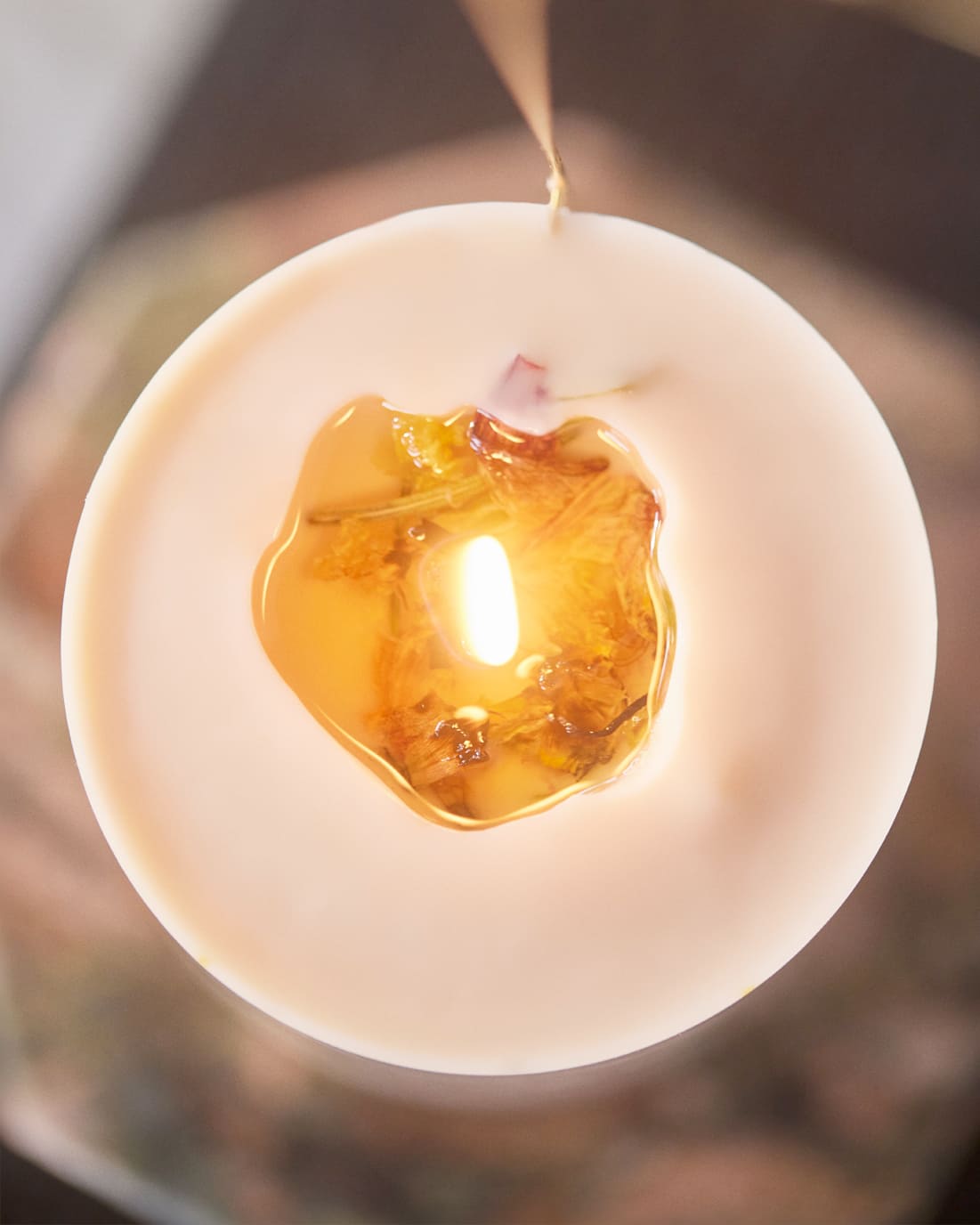Candle Meditation: Techniques and Benefits
Candlelight meditation , an ancient practice inspired by yoga and spiritual traditions, promotes relaxation and serenity. It is one of the Trataka exercises. These are known for their beneficial effects on the mind and body by reducing stress and anxiety, facilitating concentration, sleep, and mental clarity. Trataka , which means “to look” or “to gaze” in Sanskrit, involves using a focal point , such as a candle flame, to focus the mind, ward off extraneous thoughts, and achieve a heightened level of consciousness.
HOZHO, creator of energetic fragrances for the body and home, explains in this article how candle meditation contributes to your daily well-being.
What is candle meditation?
Candlelight meditation is a traditional meditation technique that involves focusing one's attention on a candle flame to focus one's thoughts on it. This practice is sometimes combined with transcendental meditation, also known as mantra-based meditation.
Mantras are short phrases, words, or sounds repeated to help focus the mind. Its etymological origin, which also comes from Sanskrit, means "a tool for the mind." It is therefore entirely possible to combine Trataka exercises, which engage the gaze, with transcendental meditation , which uses the voice.
In a candlelight meditation session , the subject stares intently into the glow of a candle, without blinking. When tears begin to flow, they close their eyes and visualize the flame in their mind. Other candlelight meditation exercises focus more on breathing. This involves staring at the candle and practicing conscious breathing at a steady, continuous pace.
There are also guided candle meditation exercises. These can be done independently, using meditation apps or YouTube videos, or in person, during specific sessions.
Candlelight meditation is an excellent exercise for reducing mental stress, combating stress, depression, and post-traumatic stress. It also promotes brain plasticity, lowers blood pressure, and develops self-awareness. It is therefore often used to support programs related to cognitive decline, alcoholism, or manic-depressive disorders.
This type of meditation therefore includes exercises aimed at specific objectives:
- mindfulness meditation by candlelight;
- candle meditation for sleep;
- candle meditation for anxiety;
- candle meditation for chakras;
- candle meditation for relaxation;
- etc.
Which candles should you choose for meditation?
Meditation candles are essential tools to support your meditation practice. At HOZHO, we design energy candles designed to purify, protect, harmonize, and revitalize the energies of your home. Our harmonizing candles, made with sandalwood, red rose, and oak, are ideal for accompanying a yoga or meditation session.
Sandalwood is known for its grounding and calming properties. It is used in many spiritual traditions to calm the mind, facilitate spiritual connection, and introspection. Its sweet, woody aroma is recognized in aromatherapy for its relaxing and balancing properties that reduce stress and anxiety . Sandalwood is often used to balance emotions and promote a state of serenity.
The red rose is associated with emotional healing and opening the heart. It raises vibrations, stimulates kindness, and strengthens love for oneself and others. Its floral fragrance diffuses gentle energetic principles that help develop intuition and emotional balance . It is also known for its anti-stress and anti-depressant properties .
Oak symbolizes strength, stability, and resilience. It brings a sense of security, develops mental clarity, and enhances decision-making. Its aromas are valued for their stimulating and balancing properties. It enhances mental and physical well-being.
Our meditation candles are designed to elevate your level of mindfulness, reduce intrusive thoughts, and create a context conducive to meditation practice. Non-toxic and harmless, they are handcrafted from organically grown, energetic plants. Meditation with natural candles is essential for stimulating your positive energies, aiding in calmness and inner peace.
How to meditate with a candle?
First and foremost, it's important to establish a routine and framework that fits your lifestyle. Meditation requires a dedicated space where you feel comfortable, protected, and connected to yourself. Most often, this meditation exercise is practiced at home, sitting or lying down, accompanied by soft music and a pleasant room fragrance.
Candlelight meditation takes place primarily in a closed, dimly lit space. For example, sit on a cushion or yoga mat directly on the floor and place your candle at eye level on a low table or chair. Lower your curtains or slightly close your shutters if your session takes place during the day. If you live in a city or apartment, playing music or a playlist of natural, relaxing sounds will help reduce noise pollution. You can also use noise-canceling headphones, such as those that play white noise, which are particularly recommended for hypersensitive people.
Light your candle, sit down, and focus on the flame. During the first few seconds, you will gradually feel your breathing and heartbeat slowing. Your mind will gradually adapt its rhythm to that of your body until it focuses its flow of thoughts on the visualization of the flame. Observe its unpredictable movements and accept them as you accept the emotions that flow through you. You can keep your eyes open, then close them when tears come to continue your meditation. For a few seconds, the persistence of vision will diffuse an afterimage of the flame. Then it's up to you to imagine it.
It's also possible to keep your eyes open and blink normally throughout the session. In addition to the vision, you can focus on your breathing or repeat a mantra. Candle meditation only lasts a few minutes at first. Regular practice will help you develop your concentration and introspective abilities, and establish a ritual tailored to your spiritual and emotional needs.
Sources:
Lynch, J., Prihodová, L., Dunne, P., O'Leary, C., Breen, R., Carroll, Á., Walsh, C., McMahon, G., & White, B. (2018). Mantra meditation program for emergency department staff: a qualitative study. BMJ Open , 8. https://doi.org/10.1136/bmjopen-2017-020685 .
Álvarez-Pérez, Y., Rivero-Santana, A., Perestelo-Pérez, L., Duarte-Díaz, A., Ramos-García, V., Toledo-Chávarri, A., Torres-Castaño, A., León-Salas, B., Infante-Ventura, D., González-Hernández, N., Rodríguez-Rodríguez, L., & Serrano-Aguilar, P. (2022). Effectiveness of Mantra-Based Meditation on Mental Health: A Systematic Review and Meta-Analysis. International Journal of Environmental Research and Public Health , 19. https://doi.org/10.3390/ijerph19063380 .
Chiesa, A., & Serretti, A. (2009). A systematic review of neurobiological and clinical characteristics of mindfulness meditations. Psychological Medicine , 40, 1239 – 1252. https://doi.org/10.1017/S0033291709991747 .










